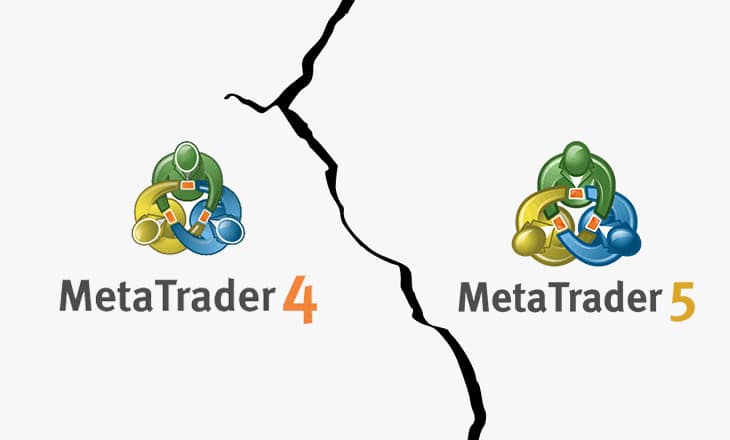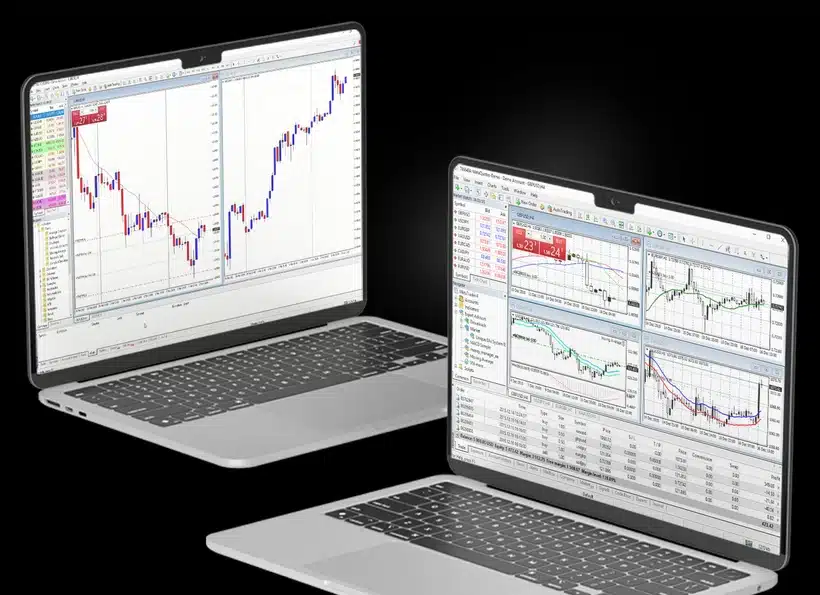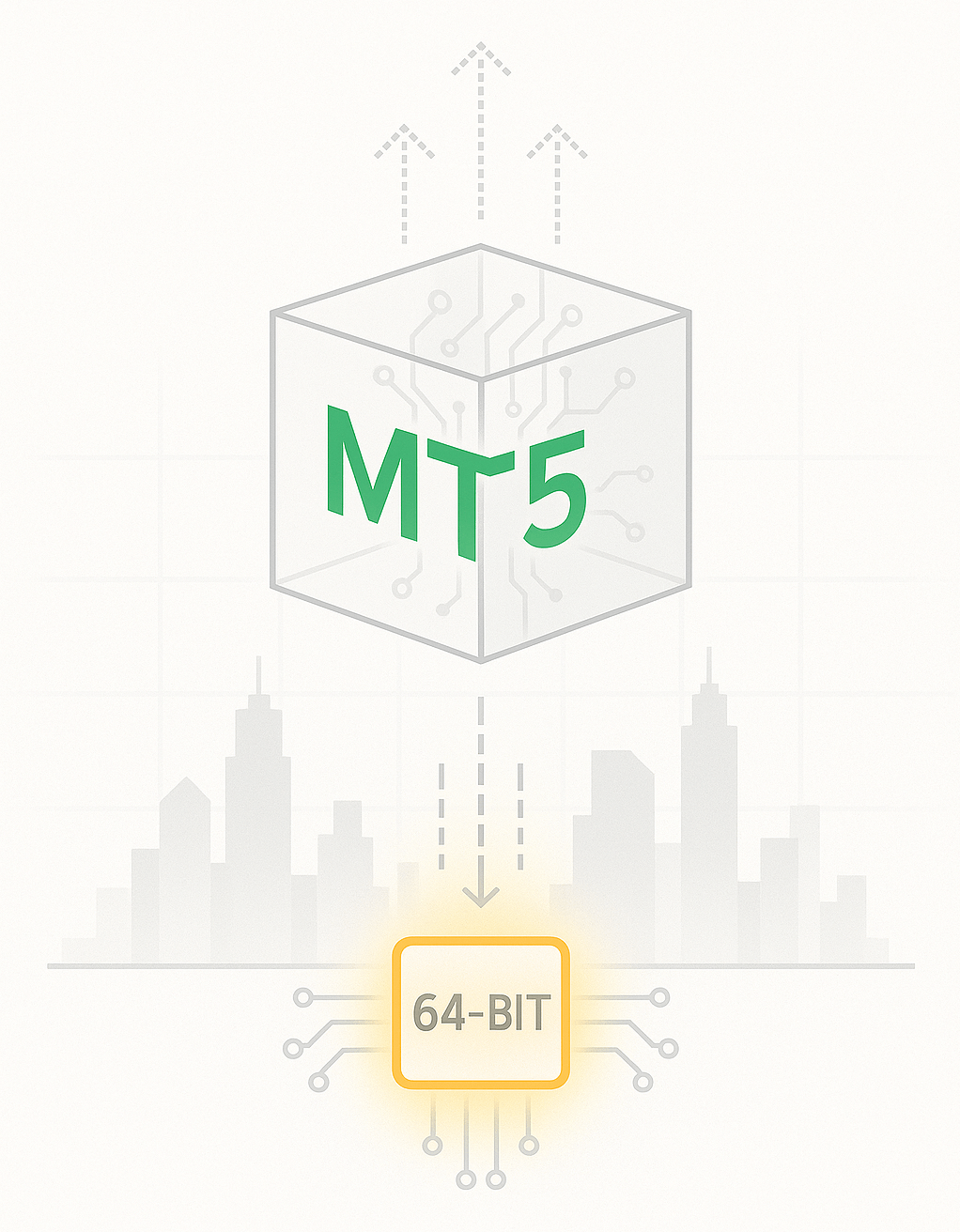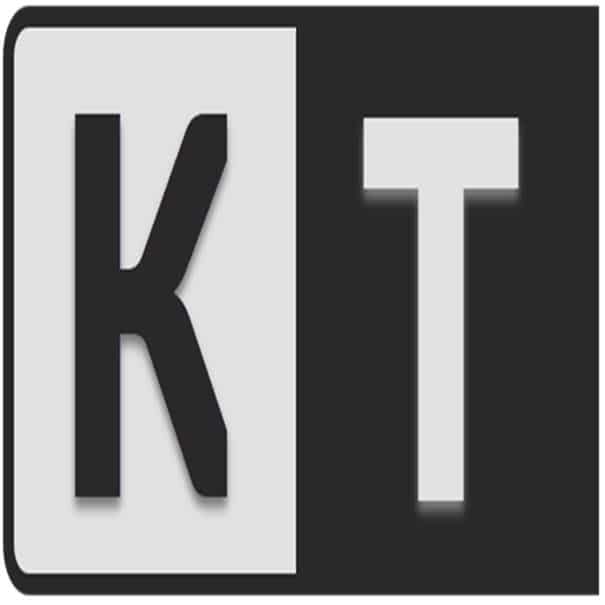We hope you enjoy reading this blog post.
Become a Pro Trader by using our fine-tuned Indicators and Expert Advisors.
MetaTrader 4 vs 5 Comparison: Should You Upgrade? Find Out Now

In today’s highly technological trading landscape, your trading platform of choice can make all the difference between a great setup and a bad one. MetaTrader 4 (MT4) and MetaTrader 5 (MT5), developed by MetaQuotes Software Corp., are two of the most trusted platforms in the industry used by millions of traders worldwide.
At first glance, they look pretty similar, but each offers unique features to support different types of traders.
In this guide, we’ll break down the key differences in the MetaTrader 4 vs 5 showdown, comparing MT4 and MT5 side by side so you can decide which platform best fits your trading style and goals.
What is the MetaTrader Platform?
MetaTrader has absolutely changed the game for retail traders. It's a full-featured trading command center at your fingertips. Whether you're on a laptop at home or taking trades on your phone at the beach.
Developed by MetaQuotes Software and first launched back in 2005, MetaTrader quickly became the go-to platform for forex traders and it didn’t stop there.
Today, it’s widely used for trading everything from commodities and indices to cryptocurrencies.
What really sets it apart is how seamlessly it connects traders to their brokers, offering everything you need to analyze markets, place trades, and manage your positions all in one place.
One of MetaTrader’s biggest strengths is its flexibility.
It comes loaded with built-in technical analysis tools, supports automated trading through Expert Advisors (EAs), and even lets you build your own indicators and strategies using its custom language, MQL.
A dream for some traders.
Most brokers stick with MetaTrader for a reason
it’s stable, secure, and proven. Think of it like the Windows of trading platforms.
It’s not flashy or the trendiest, but it is built really well and does exactly the job on point.
What is MetaTrader 4?
Launched in 2005 and quickly became the go-to choice for foreign market exchange brokers across the globe, which gave MT4 global user trust and helped establish itself as the industry benchmark
It’s a well-rounded platform that not only handles spot forex exceptionally well but also supports CFDs (Contracts for Difference) and futures.
What really makes MT4 stand out is its balance.
It offers a solid mix of power and simplicity.
You get all the essential tools from clean charting and built-in indicators to more advanced technical analysis, all wrapped in an interface that’s straightforward and easy to navigate.
Whether you’re just getting started or have years of experience, MT4 gives you what you need without drowning you in complexity.
One of MT4's strongest suits is its automated trading capability, through which Expert Advisors (EAs) can execute trades
These automated trading programs are based on predefined parameters, essentially allowing traders to implement their strategies without constant manual intervention.
The platform uses its own MQL4 programming language, which allows traders to develop custom indicators and automated trading robots. This has cultivated a lively community of developers and traders who actively share their tools and innovations.
The platform provides strong and practical charting features, including nine different timeframes and more than 30 built-in technical indicators.
Traders can monitor several currency pairs at once using multiple charts, and the platform accommodates a variety of order types, ranging from simple market orders to more complex conditional orders.
What's particularly noteworthy about MT4 is its stability and reliability. The platform continues to perform reliably and maintains robust security even during times of significant market volatility or while executing complex automated trading strategies.
Which explains why a lot of traders prefer to stick with MT4 even when new platforms emerge.
What is MetaTrader 5?
MetaTrader 5 (MT5), introduced in 2010, is the next-generation platform presented by MetaQuotes as the successor to MT4.
MT5 was designed as an all in one hub for trading the wide range of financial markets.
MT5 takes everything traders loved about MT4 and kicks it up a notch.
Metatrader 4 was built to trade forex only. While MT5 opens the doors to most markets including stocks, commodities, indices, futures, and even crypto.
It’s a full-fledged trading workstation built for serious market access and flexibility.
The platform’s technological advancements:
- Access to 21 chart timeframes (versus just 9 on MT4).
- Uses MQL5, a more powerful and efficient programming language.
- Includes a built-in economic calendar.
- Improved strategy testing with faster, multi-currency backtesting and more accurate simulations.
- Offers additional pending order types and more precise trade execution options.
But the increased functionality and advancement come with a steeper learning curve and higher system requirements.
MT5 was built for modern day traders who demand access to advanced analytical tools, making it more appealing for traders who cover multiple asset classes.
It was built with modern markets in consideration, supporting netting and hedging systems.
Offering features like a centralized strategy tester and native 64-bit support for better performance with modern hardware.
MT4 vs MT5: Key Differences
Let’s compare the features of MT4 and MT5 platforms:
Feature | MetaTrader 4 (MT4) | MetaTrader 5 (MT5) |
|---|---|---|
Market Coverage | Focused on Forex and CFDs. | Supports a broader range: Forex, CFDs, Stocks, Futures, Bonds. |
Available Timeframes | 9 standard chart timeframes. | 21 different timeframes for more detailed analysis. |
Built-in Indicators | 30 technical indicators included. | 38 indicators, plus support for more advanced custom tools. |
Programming Language | MQL4 – user-friendly but more limited. | MQL5 – faster, more advanced, and object-oriented. |
Trading System | Hedging supported. | Supports both hedging and netting models. |
Economic Tools | No built-in economic calendar. | Integrated economic calendar for real-time fundamental insights. |
Chart Display Types | Bar, Candlestick, and Line charts. | Same three chart types: Bar, Candlestick, and Line. |
Performance Needs | Lightweight and compatible with older devices. | Designed for newer systems with higher performance requirements. |
User Community | Larger user base, with a wide selection of EAs and tools. | Smaller but growing user base, with newer resources and innovations. |
The choice between the two often depends on your specific trading needs.MT4 is known for its strong focus on forex trading and its dependable performance, whereas MT5 is better suited for traders seeking access to a wider variety of markets along with more sophisticated analytical capabilities.
Why Choose MT4 Over MT5?

It is obvious that MT5 is the newer, better, and faster platform in the market. But MT4 still holds strong appeal for a lot of traders. Here’s why:
Simplicity and Focus
MT4 was built specifically with forex trading in mind. Its clean layout and user-friendly interface make it incredibly accessible, especially for beginners. It avoids unnecessary complexity, allowing traders to focus on executing their strategies without getting lost in clutter.
Light resources, big performance
Runs super smoothly even on less powerful hardware, because it has been optimized for stability in highly volatile markets.
The game here is lean architecture = minimal demand on system resources
A Massive Ecosystem of Tools
Over the years, MT4 has built up a huge repository of custom indicators, Expert Advisors (EAs), and community-contributed resources. There are countless forums, tutorials, and guides available. Meaning you’ll rarely struggle to find help or solutions.
Broker Support and Availability
MT4 is still widely offered by brokers around the globe and is often their default platform. It’s familiar to support teams, and its long-standing reliability makes it a safe and stable option for most traders.
A Refined Trading Experience
If your main focus is forex, MT4 delivers a streamlined, no-nonsense experience. Charts are fast and responsive, order execution is reliable, and the interface is easy to navigate.
Why Choose MT5 Over MT4?
MetaTrader 5 is a next-generation platform designed with the modern trader in mind. Here’s what makes MT5 a noticeable upgrade:
Access to More Markets
MT5’s biggest strength is its multi-asset support. Unlike MT4, which focuses primarily on forex, MT5 gives you access to a wide range of instruments. If you’re trading across multiple markets, MT5 allows you to do it all from a single platform.
More Powerful Analysis Tools
With 21 timeframes (compared to MT4’s 9) and 38 built-in technical indicators (versus 30 in MT4), MT5 gives you deeper insights and more flexibility in your chart analysis. It’s built to accommodate traders who want to go beyond the basics.
Superior Programming Language
MT5 uses MQL5, an object-oriented language that supports faster, more complex, and more efficient strategy development. It allows for more advanced automation, quicker optimization, and better code performance compared to MQL4.
Advanced Strategy Testing
It allows for multi-currency testing and uses real tick data for more accurate backtests. You can test complex strategies across multiple instruments simultaneously.
Built for the Future.

With 64-bit architecture and continuous updates, MT5 is designed to stay current with modern trading requirements and regulatory changes.
MT4 vs MT5: Final Thoughts
At the end of the day, choosing between MT4 and MT5 comes down to your personal trading style, goals, and the markets you plan to access. The great news? Keenbase offers powerful tools tailored for both platforms, so you don’t have to pick sides, just pick what suits you and we've got you covered.
- If you're primarily trading forex and value a reliable, lightweight platform with a huge library of proven indicators and Expert Advisors, MT4 is a perfect choice. Keenbase’s tools adds even more value offering refined EAs and indicators that enhance your trading experience without complexity.
- But if you're expanding your trading to include stocks, commodities, futures, or crypto and want advanced analytics and flexible automation then MT5 brings the extra horsepower. And Keenbase supports it fully as well, with a growing selection of MT5-native tools crafted to help you tap into these additional market opportunities.
Curious where to start? Try a demo account on both platforms with Keenbase tools activated. That way, you can get a feel for each setup and see which one aligns best with your trading goals.
Take Your Trading to Next Level
Take Your Trading to Next Level
You Might Also Like:


